Video of the Week:
Planting Bulbs for Spring Color
Upcoming Events:
Ornamentals:
Pruning Trees and Shrubs in the Fall
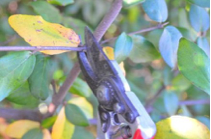
Shrubs differ in how severely they can be cutback. Junipers do not break bud from within the plant and therefore should be trimmed lightly if you wish to keep the full shape. Overgrown junipers should be removed. On the other hand, there are certain shrubs that can be pruned back severely during the spring. Rejuvenation is the most severe type of pruning and may be used on multi-stem shrubs that have become too large with too many old branches to justify saving the younger canes. All stems are cut back to 3- to 5-inch stubs. This works well for spirea, forsythia, pyracantha, ninebark, Russian almond, little leaf mock orange, shrub roses, and flowering quince. Just remember that spring is the correct time to do this, not now. (Ward Upham)
Is it a Maple or an Oak?
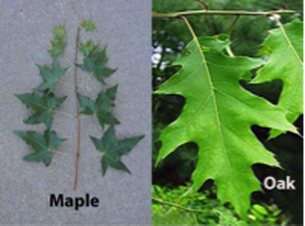
Miscellaneous:
Work Garden Soil in the Fall
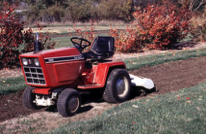
Insects often hide in garden debris. If that debris is worked into the soil, insects will be less likely to survive the winter. Diseases are also less likely to overwinter if old plants are worked under. Also, the garden debris will increase the organic matter content of the soil. Working the debris into the soil is often easier if you mow the old vegetable plants several times to reduce the size of the debris.
Fall is an excellent time to add organic matter. Not only are organic materials usually more available in the fall (leaves, rotten hay or silage, grass clippings) but fresher materials can be added in the fall than in the spring because there is more time for them to break down before planting. As a general rule, add 2 inches of organic material to the surface of the soil and till it in. Be careful not to overtill. You should end up with particles like grape nuts or larger. If you work your garden into the consistency of dust, you have destroyed the soil structure. (Ward Upham)
Fall is a Good Time for Soil Testing
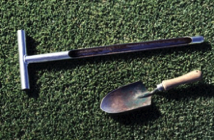
Begin by taking a representative sample from several locations in the garden or lawn. Each sample should contain soil from the surface to about 6 to 8 inches deep. This is most easily done with a soil sampler. Many K-State Research and Extension offices have such samplers available for checkout. If you don’t have a sampler, use a shovel to dig straight down into the soil. Then shave a small layer off the back of the hole for your sample. Mix the samples together in a clean plastic container and select about 1 to 1.5 cups of soil. This can be placed in a plastic container such as a resealable plastic bag.
Take the soil to your county extension office to have tests done for a small charge at the K-State soil-testing laboratory. A soil test determines fertility problems, not other conditions that may exist such as poor drainage, poor soil structure, soil borne diseases or insects, chemical contaminants or damage, or shade with root competition from other plants. All of these conditions may reduce plant performance but cannot be evaluated by a soil test. (Ward Upham)
Amending Soils with Sand
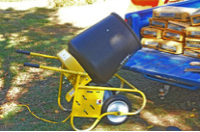
This is the same principle used to make concrete and the result is somewhat the same. You end up making a bad situation worse. So how much sand does it take for it to be effective? Normally, we consider about 80 percent sand to be sufficient. In most cases this makes the use of sand impractical. The addition of organic matter is a much better choice. (Ward Upham)
Contributors: Ward Upham, Extension Associate
 RSS Feed
RSS Feed
